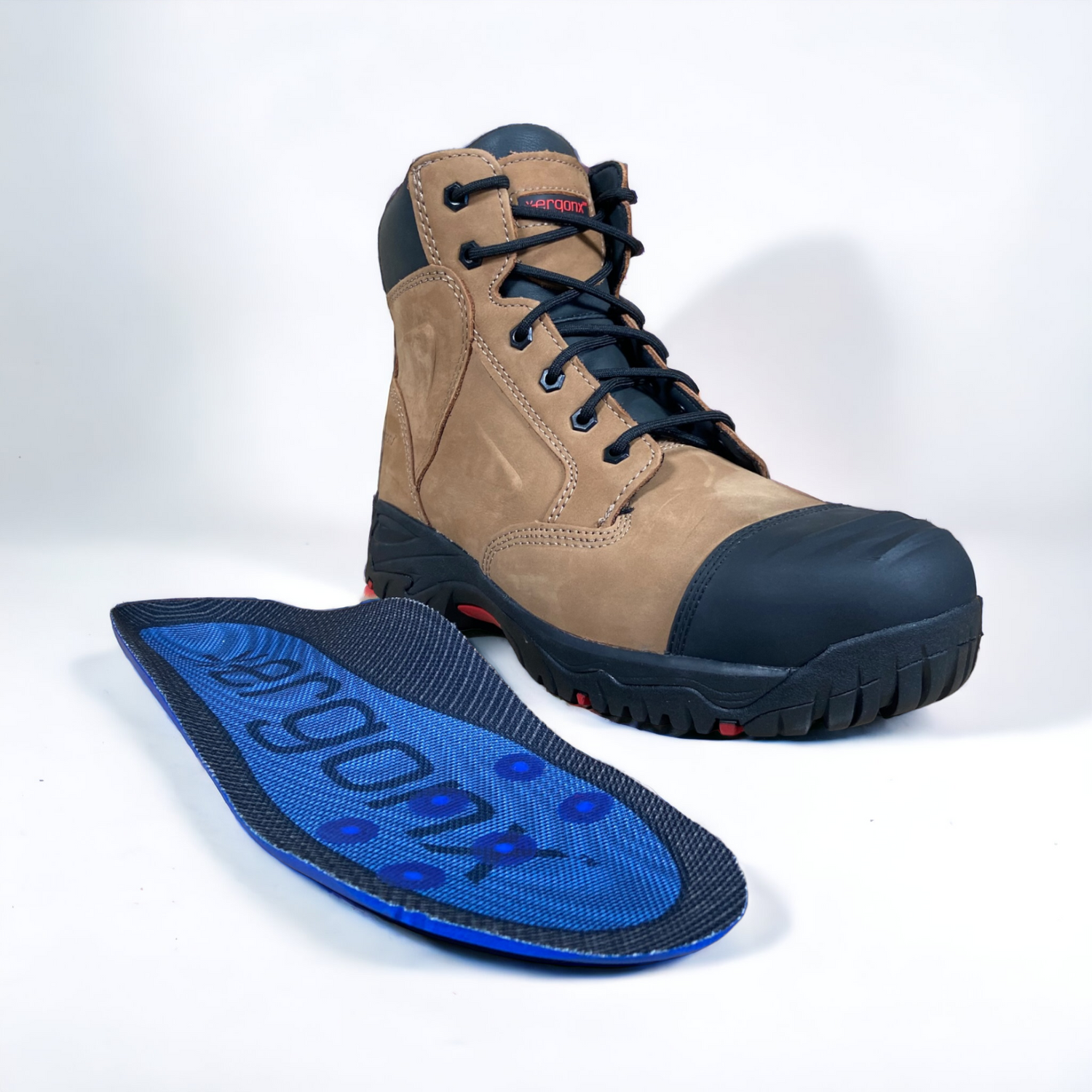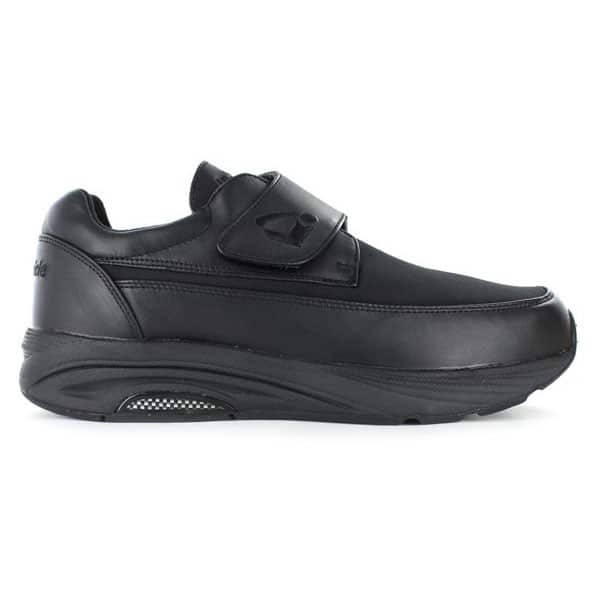Knee Pain and chondromalacia patella
Knee pain related to over pronation is often described as “A nagging/burning type pain on the inside of the knee joint or underneath the knee cap. This is aggravated by walking long distances or up and down stairs”.
This specific type of pain is largely caused by over pronation (rolling in) of the foot. When the foot excessively pronates the entire lower limb internally rotates (twists towards the inside). This causes a shift of the pressures to the inside of the knee joint and underneath the knee cap.The change in pressure causes the knee and the joint under the patella (knee cap) to wear unevenly.
Over time the uneven wear and tear causes pain.
Our innersoles aim to correct the over pronation and restore the lower limb alignment. This stops the internal rotation of the lower limb and relieves knee pain.
Knee Pain / Chondromalacia Patella
Chondromalacia patella is the medical term used to denote what we commonly call “Runner’s Knee”.
Often used synonymously with Patellofemoral Syndrome, Chondromalacia Patella refers to pain on the anterior (front) side of the knee joint, at or around the kneecap (patella).
The word “Chondromalacia” literally means “soft cartilage”, as softening and degeneration of the cartilage present at the back of the kneecap (or patella) was originally considered the main cause of this condition.
The Anatomy of Knee joint:
Knee joint is made of four different bones. One from thigh (femur) and two from lower leg (tibia and fibula) the fourth is actually a seasamoid bone called the patella. A seasmoid bone is defined as a bone embedded in a tend on (muscle to bone fibrous attachment). In this case, it is present in the tendon of Quadriceps femoris, the anterior extensor muscle of the thigh that comprises of four parts (quad = four and ceps = parts or heads).


The patella is present at the anterior aspect of the knee joint and its posterior surface (the surface towards femur bone) is covered with a smooth cartilage that slides effortlessly in the groove of femoral bone during flexion and extension of the knee joint.

What Causes Chondromalacia Patella:
During normal joint movement, the cartilaginous surface of patella runs smoothly in a straight line, in the groove of femoral bone. If there is any misalignment, trauma, acute or chronic or any disease damages the cartilaginous surface of patella, the movement does not remain smooth and painless.
Chondromalacia is not one cause fits all condition. It may occur due to:
Acute Trauma:
Injury to the joint, leading to fracture or dislocation of patella
Chronic Trauma / Misalignment:
Due to disruption of the normal sliding pattern. Patella moves more on the lateral side instead of moving in a straight line, deviates to a side leading to friction during joint movement, damaging the cartilage covered surface of patella, resulting in chronic inflammation and pain. – Excessive use of the joint, such as during activities involving excessive bending of the knee, running, jumping etc.
Disease:
Arthritis of the kneecap, which is seen mostly in old age group.
In young individuals, chronic trauma to the cartilage is the most common cause of chondromalacia patella.
Risk Factors:
Certain conditions make an individual more prone to developing the condition:
Over use of the knee joint – Such as in sports involving running, jumping, knee bending etc. Therefore, it is seen mostly in people involved in sports and other physical activities.
Alignment problem – As occurring due to imbalance in the strength of lateral (outer) and medial (inner) parts of Quadriceps femoris. When lateral muscle has a stronger pull it may lead to lateral deviation of patella during joint extension.
`There may also be a developmental mal alignment of the joint.
Gender – Due to a comparatively high Q-angle (the angle of the thigh), females are usually more affected by this condition. The Q angle is the angle between thigh muscle and patella tendon, and defines the alignment of the knee. An abnormal angle makes the individual more prone to overuse injuries.
Knock-Knees (Knee Valgus)
Flat foot condition – When the foot pronates it upsets the normal tracking of the patella causing it to track laterally causing wear and tear on the patella.
An abnormal Q angle even in males
Irregular under surface of patella
Hyper mobile joints, slack or loose ligaments leading to patella deviating from normal path during movement.
Patella alta or Patella infera.
Symptoms:
This condition is more commonly seen in athletes who are otherwise in perfect shape.
Symptoms include:
A deep seated dull pain in and around the knee cap
Pain is aggravated by movement especially running, descending or climbing stairs, getting out of the car, jumping etc.
Theater sign… pain excruciates when one rises after sitting for a prolonged on a chair with bent knees.
There is a grinding feeling at the joint when one extends the leg
Tenderness at the kneecap area
Swelling of the joint, though it occurs rarely.
Diagnosis:
Diagnosis is based on clinical symptoms and physical examination.
Knee is painful, tender and sometimes swollen.
Kneecap may not be well aligned.
Extending the knee joint, gives a grinding feeling below patella.
X-rays do not help much help but they may help to rule out other conditions.
An MRI is a better diagnostic tool for Chondromalacia Patella, however this is usually not needed.
Sometimes a blood test may be required to rule out arthritis and other inflammatory conditions.
Management:
Rest: Complete rest and avoidance of activities that elicit pain such as running, kneeling and climbing descending stairs. To maintain fitness choose exercises that do not put a strain on the knee, such as swimming, stationary cycling with low resistance etc.
Anti Inflammatory Medications: Pain medications such as ibuprofen, naproxen etc. These medications not only suppress the pain and swelling, but also facilitate the healing of the damaged cartilage.
For immediate pain relief use ice packs for further help.
Innersoles: When the foot pronates it forces the knee to internally rotate and the patella to track abnormally. This causes the patella to wear unevenly causing pain.
Knee Supports: Sometimes a knee support such as a knee brace or in severe case a knee immobilizer may also be required.
Taping of Patella: Sometimes an adhesive tape is applied over patella to rectify its alignment during joint movement.
Physiotherapy: Apart from the symptomatic treatment, the underlying problem needs to be corrected.
A physiotherapist may be consulted for further management. The main aim of physiotherapy is to correct the muscle imbalance to correct alignment or to strengthen Quadriceps and Hamstrings (muscle on the backside of thigh) using specific exercises.
The Rehabilitation exercises include Isometirc Quad Sets, Straight Leg raises, Isotonic Hamstring etc.
Surgery: In about 10 to 15% of cases, if after 3 to 6 months of conservative treatment and physiotherapy the condition fails to resolve, a surgical treatment should be considered.
When a major anatomical correction is required an open surgery is performed, however usually an Arthroscopic surgery is sufficient. This involves inserting a small flexible camera through a tiny incision; the surgeon operates through the camera using very fine instruments.
Arthroscopic approach is mainly applied to ;
Remove the damaged part of patella cartilage.
Releasing the tight ligaments to ease off the excess lateral pull on patella, a process called Lateral Release.
In some cases, the very severe ones, Patella needs to be removed.
Outcome and Complications:
The prognosis is usually good and the condition resolves in a few months with proper rest and exercises.
However, in a few cases, pain may persist even after treatment or may even get worse.
In untreated cases, occasionally a significant reduction in the strength and muscle mass of quadriceps femoris is seen.








